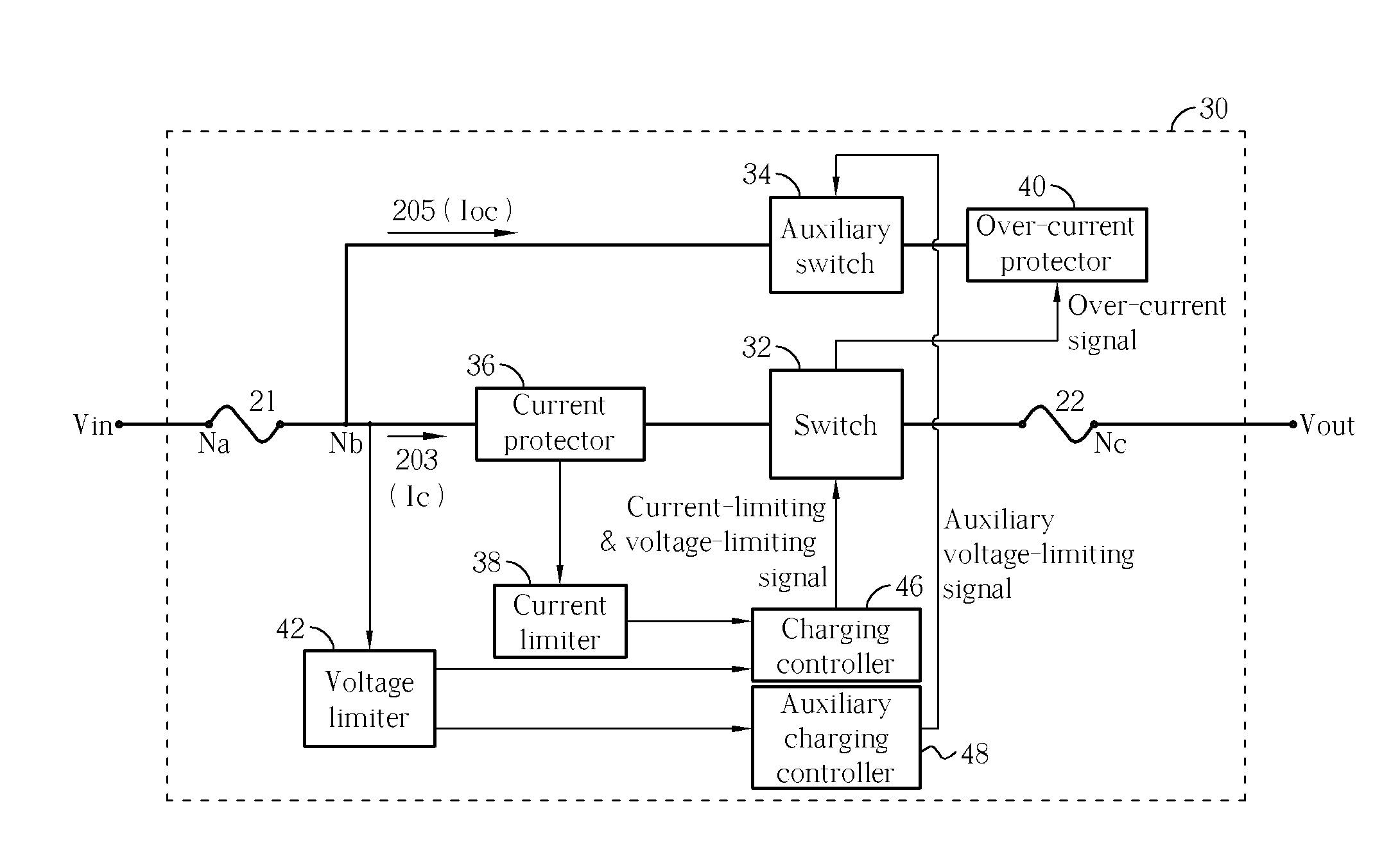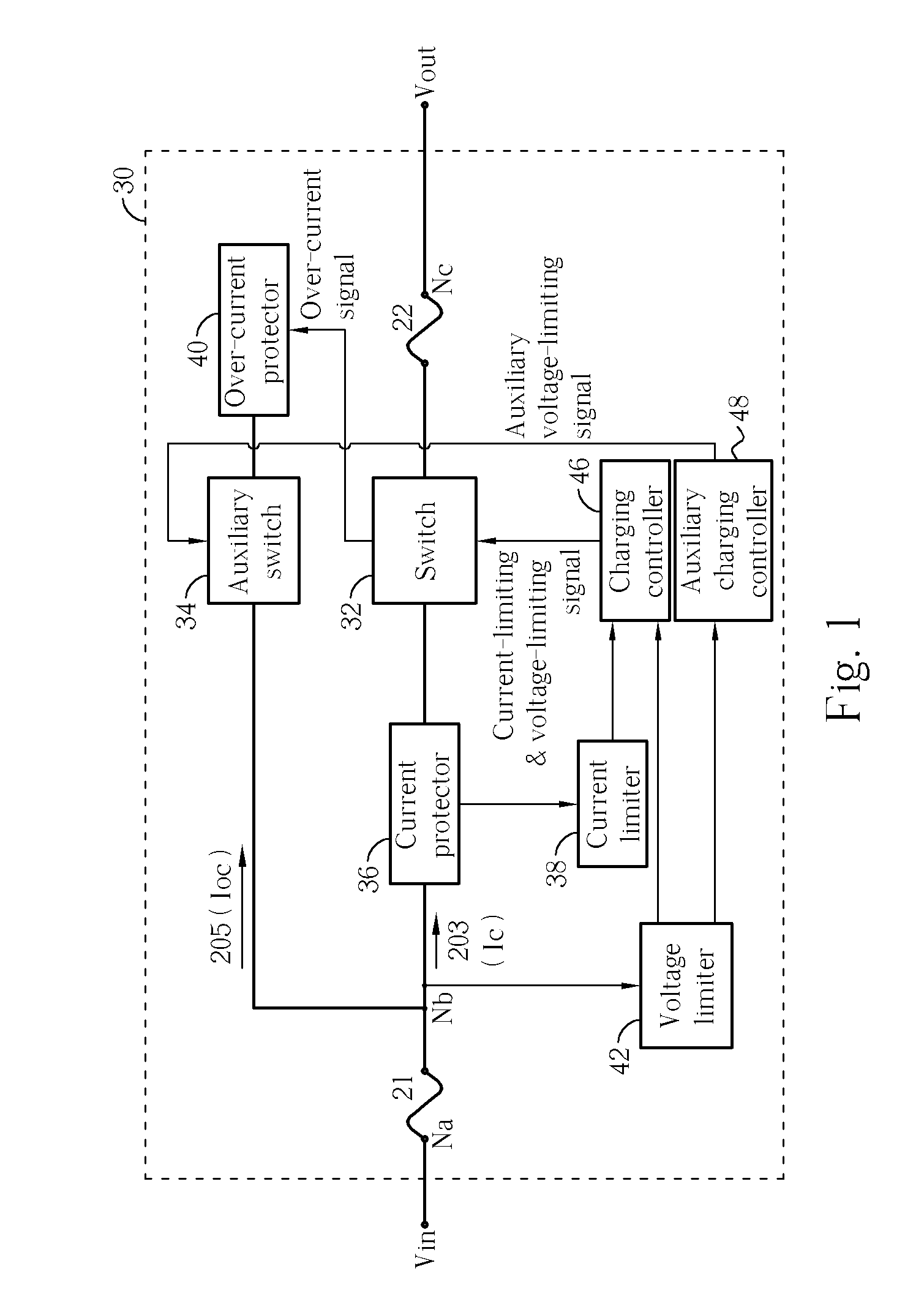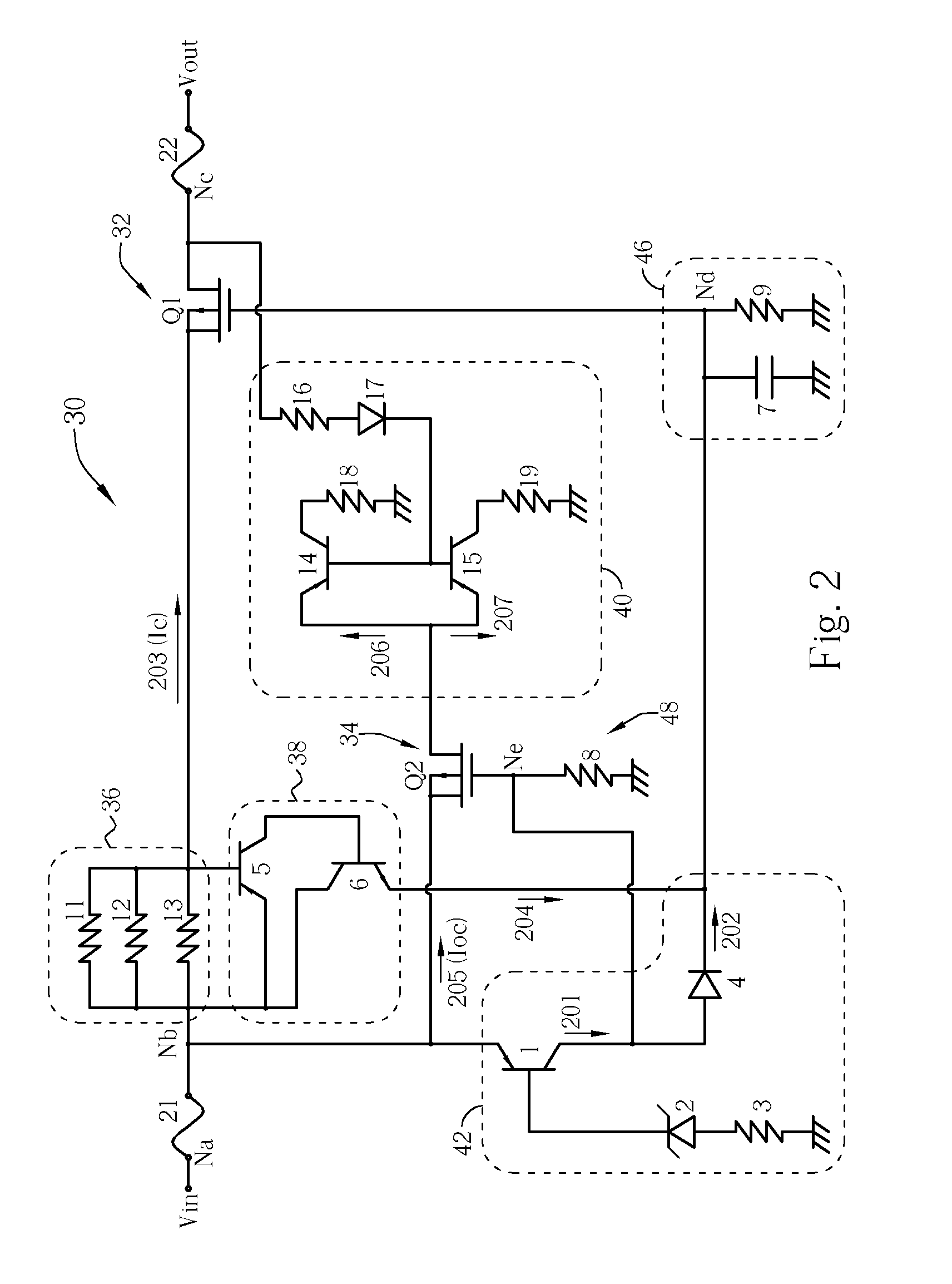Circuit for charging protection with enhanced overcurrent protection circuitry
a protection circuit and circuit technology, applied in the direction of safety/protection circuits, emergency protection circuit arrangements, emergency protection devices, etc., can solve the problems of short circuit, damage to battery, damage to devices, etc., to speed up the fuse meltdown and increase the current flowing through the fuse
- Summary
- Abstract
- Description
- Claims
- Application Information
AI Technical Summary
Benefits of technology
Problems solved by technology
Method used
Image
Examples
Embodiment Construction
[0015] Please refer to FIG. 1. FIG. 1 is a diagram of a charging protection circuit 30. The charging protection circuit 30 comprises a fuse 21, a current detector 36, a switch 32, an auxiliary fuse 22, a current limiter 38, a charging controller 46, an auxiliary switch 34, an overcurrent protector 40, a voltage limiter 42, and an auxiliary charging controller 48. The first end of the fuse 20 is connected to a node Na and receives a current from a power supply. The second end of the fuse is connected to a node Nb, a branch 203, and a branch 205, and transmits the current from the power supply. The current detector 36, the switch 32, and the auxiliary fuse 22 are coupled at the branch 203. A charging current Ic flows through the branch 203 and the charging current is output to the battery at a node Nc, namely the output end of the charging protection circuit 30.
[0016] The switch 32 is used to control the charging current Ic. The current detector 36 measures the magnitude of the charg...
PUM
 Login to View More
Login to View More Abstract
Description
Claims
Application Information
 Login to View More
Login to View More - R&D
- Intellectual Property
- Life Sciences
- Materials
- Tech Scout
- Unparalleled Data Quality
- Higher Quality Content
- 60% Fewer Hallucinations
Browse by: Latest US Patents, China's latest patents, Technical Efficacy Thesaurus, Application Domain, Technology Topic, Popular Technical Reports.
© 2025 PatSnap. All rights reserved.Legal|Privacy policy|Modern Slavery Act Transparency Statement|Sitemap|About US| Contact US: help@patsnap.com



